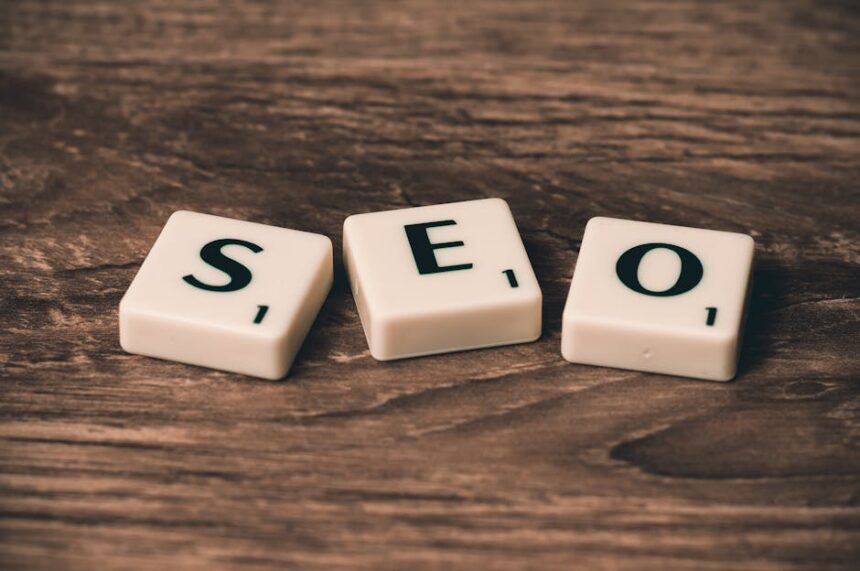The programmatic advertising landscape, once a nascent technological frontier, has matured into the dominant force in digital media buying, continuously redefined by innovations, data evolution, privacy mandates, and expanding channel opportunities. Its inherent promise of efficiency, precision, and scale continues to drive its evolution, compelling advertisers, publishers, and ad tech intermediaries to adapt at an unprecedented pace. From real-time bidding’s early days to the sophisticated, AI-driven ecosystems of today, programmatic has undergone a profound transformation, moving beyond mere automation to intelligent, data-centric media orchestration.
The Foundational Shift: From Manual to Algorithmic
The genesis of programmatic advertising lay in the desire to automate the laborious, human-intensive process of buying and selling digital ad inventory. Traditional media buying involved direct negotiations, RFPs, insertion orders, and manual campaign execution. Programmatic introduced a paradigm shift by leveraging technology to facilitate instantaneous transactions, powered by algorithms and data signals. This shift began with Real-Time Bidding (RTB), a protocol that allowed advertisers to bid on individual ad impressions in milliseconds, based on specific audience characteristics and contextual relevance. RTB fundamentally changed the economics of advertising, democratizing access to inventory and enabling granular targeting previously unimaginable.
Demand-Side Platforms (DSPs) emerged as the central interface for advertisers, allowing them to manage bids, target audiences, and optimize campaigns across various ad exchanges. On the flip side, Supply-Side Platforms (SSPs) provided publishers with tools to manage and sell their ad inventory to the highest bidder, maximizing yield. Ad exchanges acted as the marketplace connecting DSPs and SSPs, facilitating the bidding process. This foundational structure, while still relevant, has become vastly more complex and interconnected, reflecting the ongoing evolution of data, technology, and market demands. The initial promise of efficiency quickly broadened to include enhanced targeting capabilities, superior campaign performance, and a more transparent ecosystem, albeit with initial growing pains concerning ad fraud and brand safety. This initial automation laid the groundwork for the subsequent waves of innovation, emphasizing not just speed, but also intelligence and strategic advantage. The continuous development of these core components remains a driving force in the current landscape, with each iteration aiming for greater sophistication and user benefit.
Data as the New Crude: Refining Targeting Capabilities
At the heart of programmatic’s evolution is data. The ability to collect, analyze, and activate vast datasets has transformed advertising from broad-stroke campaigns to hyper-personalized experiences. Initially, third-party cookies served as the primary mechanism for tracking user behavior across websites, enabling retargeting and audience segmentation. Data Management Platforms (DMPs) rose to prominence, centralizing user data, segmenting audiences, and integrating with DSPs for activation. This era saw an explosion in data availability, leading to unprecedented levels of audience understanding and targeting precision. Advertisers could identify users based on demographics, interests, past browsing behavior, purchase intent, and even real-world movements, orchestrating complex customer journeys across multiple touchpoints.
However, the reliance on third-party cookies introduced significant challenges. Users grew increasingly concerned about privacy, leading to a fragmented regulatory landscape. Browsers like Safari and Firefox began blocking third-party cookies by default, signaling the impending deprecation across the entire ecosystem, most notably Google Chrome’s eventual phase-out. This seismic shift has forced the industry to rethink its data strategies fundamentally, ushering in the era of first-party data and privacy-centric solutions. First-party data, collected directly from user interactions with a brand’s owned properties (website, app, CRM), has become paramount. Its value lies in its directness, transparency, and accuracy, forming the cornerstone of future targeting strategies. Brands are investing heavily in Customer Data Platforms (CDPs) to unify and activate this first-party data, creating comprehensive customer profiles that power personalized advertising and experiences. The transition away from pervasive third-party tracking is not merely a technical adjustment but a strategic imperative, demanding a renewed focus on building direct relationships with consumers and offering transparent value exchanges for data. This focus on ethical data practices and user consent is shaping the next generation of programmatic targeting, emphasizing trust and relevance over intrusive tracking. The data landscape is now characterized by a blend of direct insights and carefully curated, privacy-enhanced external signals, moving towards a more consented and sustainable model.
The Privacy Paradigm Shift: Navigating a Cookieless Future
The deprecation of third-party cookies, coupled with stringent global privacy regulations like the General Data Protection Regulation (GDPR) in Europe and the California Consumer Privacy Act (CCPA) in the US, has fundamentally reshaped the programmatic ecosystem. These regulations mandate explicit user consent for data collection and processing, granting individuals greater control over their personal information. The industry’s response has been multifaceted, driving innovation in privacy-preserving technologies and alternative identification methods.
Contextual Targeting’s Resurgence: Old is new again. With diminished reliance on individual user tracking, contextual targeting has made a strong comeback. Advanced AI and machine learning algorithms can analyze the content of web pages, videos, and audio to understand their themes, sentiments, and brand safety implications, placing ads within highly relevant environments. This method doesn’t rely on personal data, making it inherently privacy-compliant. Modern contextual solutions go beyond simple keyword matching, employing natural language processing (NLP) and computer vision to grasp nuanced content meaning, ensuring deeper relevance and suitability. This allows advertisers to reach audiences in moments of high receptivity without needing to know specific user identities.
First-Party Data and CDPs: As previously noted, first-party data has become the bedrock. Brands are building robust data foundations using CDPs to collect, unify, and activate their proprietary customer data. CDPs go beyond DMPs by creating persistent, unified customer profiles across all touchpoints, enabling more sophisticated segmentation, personalization, and measurement. This direct relationship with the customer allows for consented data collection and usage, forming the ethical foundation for future advertising efforts.
Identity Solutions and Universal IDs: Various industry initiatives are working on new identity frameworks that prioritize privacy. These include hashed email addresses, aggregated data cohorts, and privacy-enhancing technologies like differential privacy and federated learning. Universal IDs, often based on consented first-party data shared by publishers and advertisers, aim to provide persistent, privacy-safe identifiers that can replace third-party cookies for cross-site tracking and measurement. These solutions are built with privacy by design, often encrypting user data and requiring explicit opt-in. Examples include UID2.0, RampID, and others, each with its own approach to consent and data governance.
Data Clean Rooms: These secure, privacy-preserving environments allow multiple parties (e.g., an advertiser and a publisher) to collaborate on datasets without revealing the underlying raw data of individual users. Marketers can match their first-party data with a publisher’s first-party data or a data provider’s aggregated data to gain insights into audience overlap, campaign performance, and attribution, all while ensuring individual user privacy is maintained. Data clean rooms facilitate secure data collaboration, enabling richer audience insights and measurement capabilities in a privacy-compliant manner. They represent a significant step forward in enabling data-driven advertising without compromising consumer trust.
Google’s Privacy Sandbox Initiatives: Google’s proposed Privacy Sandbox initiatives, including Topics API (replacing FLoC) and FLEDGE (now Protected Audience API), aim to enable interest-based advertising and remarketing without individual cross-site tracking. Topics API allows browsers to infer users’ interests based on their browsing history, sharing broad interest categories with websites, while Protected Audience API enables on-device ad auctions for remarketing and custom audiences. These proposals represent a fundamental shift in how audience targeting and ad delivery will function within Chrome, moving computation and data aggregation to the user’s device rather than relying on server-side tracking. While still under development and subject to industry scrutiny, these initiatives are poised to significantly impact the programmatic landscape, requiring advertisers and ad tech providers to adapt their strategies for audience segmentation, bidding, and measurement.
The collective impact of these privacy-driven changes is pushing the industry towards a more responsible, transparent, and consent-driven advertising ecosystem. The focus is shifting from simply reaching an individual to understanding their intent and context in a privacy-respecting manner, building sustainable trust with consumers. This transition demands significant investment in new technologies, a deep understanding of evolving regulations, and a commitment to ethical data practices.
Technological Advancements Driving Programmatic Evolution
Beyond data and privacy, continuous technological innovation has been a powerful catalyst in programmatic’s evolution, expanding its capabilities and reach.
Artificial Intelligence and Machine Learning (AI/ML): AI and ML are no longer buzzwords but foundational technologies underpinning modern programmatic platforms. They power sophisticated algorithms for:
- Bid Optimization: ML models analyze billions of data points in real-time to predict the likelihood of conversion for each impression, dynamically adjusting bids to maximize ROI. This goes beyond simple rules-based bidding to truly intelligent, adaptive strategies.
- Audience Segmentation and Prediction: AI can identify subtle patterns in user behavior, creating highly accurate audience segments and predicting future actions, even with less identifiable data. This allows for more precise targeting and proactive campaign adjustments.
- Creative Optimization: AI can analyze creative performance, recommend optimal ad variations, and even dynamically generate personalized ad creatives (Dynamic Creative Optimization – DCO) based on user context and predicted preferences, delivering the most impactful message to each individual.
- Fraud Detection and Brand Safety: ML algorithms are crucial for identifying and mitigating ad fraud (e.g., bot traffic, domain spoofing) and ensuring ads appear in brand-safe and suitable environments, protecting advertisers’ reputations and budgets.
- Predictive Analytics: AI/ML models can forecast inventory availability, pricing trends, and campaign performance, enabling more strategic planning and resource allocation.
Header Bidding and Server-Side Bidding (SSB): Header bidding revolutionized how publishers offer inventory, moving from a waterfall auction (sequential offering to SSPs) to a simultaneous auction, where all integrated demand sources bid concurrently. This increased publisher yield and transparency. However, client-side header bidding introduced latency issues and complexity. Server-Side Bidding (SSB) emerged as a solution, moving the auction logic from the user’s browser to a server, reducing latency, improving page load times, and simplifying implementation for publishers. SSB allows publishers to integrate with a greater number of demand partners without compromising user experience, further optimizing monetization. These advancements have made the programmatic auction environment far more efficient and equitable for publishers.
Programmatic Guaranteed and Private Marketplaces (PMPs): While RTB dominates, advertisers still seek control and premium inventory. Programmatic Guaranteed (PG) allows buyers and sellers to negotiate direct deals for fixed prices and guaranteed impressions, but with programmatic execution (automated delivery, reporting, and optimization). Private Marketplaces (PMPs) offer an invite-only auction environment where a select group of advertisers can bid on premium publisher inventory, providing greater transparency, brand safety, and access to unique audiences compared to the open exchange. These options combine the benefits of direct deals (quality, control) with the efficiency and data-driven insights of programmatic, catering to advertisers’ evolving needs for both scale and premium placement.
Cross-Channel and Omnichannel Orchestration: The holy grail of programmatic is seamless orchestration across all digital touchpoints. Advances in DSP capabilities, data unification (CDPs), and identity resolution are enabling advertisers to manage campaigns, target audiences, and measure performance consistently across various channels – display, video, audio, CTV, DOOH, and even social media. This omnichannel approach ensures a cohesive brand experience and allows for more accurate attribution models that understand the cumulative impact of various ad exposures. The goal is to move beyond siloed channel campaigns to a unified customer journey where every interaction is informed by previous ones.
These technological pillars are not isolated; they interoperate to create a more intelligent, efficient, and adaptable programmatic ecosystem. The continuous refinement of these technologies ensures programmatic remains at the forefront of digital advertising innovation.
Emerging Channels: Expanding Programmatic’s Reach
Programmatic advertising, once largely confined to desktop display, has aggressively expanded into new, high-growth channels, unlocking significant opportunities for advertisers to reach audiences wherever they consume content.
Connected TV (CTV): The explosive growth of streaming services and smart TVs has made CTV a dominant channel for programmatic video. CTV offers the reach and impact of linear TV with the targeting precision and measurement capabilities of digital. Advertisers can programmatically buy inventory across ad-supported streaming apps (e.g., Hulu, Peacock, Roku Channels), target specific households or demographics, and measure granular metrics like completion rates and household reach. The shift from linear TV budgets to CTV is a major trend, driven by cord-cutting and the superior targeting and attribution programmatic CTV offers. Challenges remain in standardization of measurement, fragmentation of inventory, and ensuring a consistent user experience, but its potential is undeniable. Programmatic CTV allows brands to deliver highly relevant video ads to engaged audiences in a premium, living-room environment.
Digital Out-of-Home (DOOH): Programmatic DOOH brings the efficiency and data-driven targeting of online advertising to physical billboards, screens in public spaces (malls, airports, taxis), and street furniture. Advertisers can buy DOOH inventory in real-time, leveraging data signals like mobile device location data, weather conditions, time of day, and audience demographics to deliver dynamic, contextually relevant ads. For instance, a coffee brand could target screens near train stations during morning rush hour on a cold day. DOOH offers unique advantages in brand awareness and driving foot traffic, bridging the digital and physical worlds. The ability to update creatives dynamically and measure real-world impact (e.g., store visits) makes programmatic DOOH a powerful tool for localized campaigns and integrated omnichannel strategies.
Programmatic Audio: With the rise of podcasts, streaming music services (e.g., Spotify, Pandora), and digital radio, programmatic audio has become a significant channel. Advertisers can programmatically target listeners based on their listening habits, demographics, and interests across various audio platforms. Programmatic audio offers a unique opportunity to reach engaged audiences in an intimate, screen-free environment, often during tasks where visual ads are not practical (e.g., commuting, exercising). Dynamic ad insertion allows for highly personalized audio messages, and the ability to track completion rates and listen-through rates provides valuable insights into engagement. The format is particularly effective for driving brand recall and awareness, and for reaching audiences at specific moments throughout their day.
In-Game Advertising: As gaming moves beyond consoles to mobile, PC, and cloud platforms, programmatic in-game advertising is gaining traction. This includes static billboards within virtual worlds, dynamic ads displayed on in-game objects, and even rewarded video ads that offer in-game currency or items for engagement. Programmatic enables advertisers to reach highly engaged gaming audiences with relevant ads that integrate seamlessly into the gaming experience, minimizing disruption. The ability to target based on game genre, player demographics, and in-game behavior opens new avenues for brands seeking to connect with diverse and often elusive audiences.
The expansion into these diverse channels reflects programmatic’s adaptability and its ability to deliver targeted, efficient advertising across virtually any digital touchpoint. Each new channel presents unique opportunities and challenges, pushing the boundaries of ad tech innovation and measurement. The future of programmatic is inherently cross-channel, driven by the consumer’s fragmented media consumption habits.
Supply Path Optimization (SPO) and Transparency
The growth and complexity of the programmatic ecosystem led to concerns about “ad tech tax” and a lack of transparency in the supply chain. Advertisers found it difficult to ascertain where their ad spend was truly going, how many intermediaries were involved, and whether they were reaching legitimate inventory. This spawned the movement towards Supply Path Optimization (SPO).
Understanding SPO: SPO is the process by which DSPs and advertisers evaluate and optimize the pathways through which they acquire ad inventory. The goal is to reduce inefficiencies, minimize arbitrage, improve transparency, and ensure that ad spend reaches legitimate publishers efficiently. Key drivers for SPO include:
- Reducing “Ad Tax”: Multiple hops between SSPs, ad exchanges, and resellers can lead to significant fees, reducing the actual revenue publishers receive and increasing costs for advertisers. SPO aims to shorten these paths.
- Improving Transparency: Advertisers want clear visibility into where their ads are running, the publishers receiving their spend, and the fees associated with each intermediary. Initiatives like
ads.txtandsellers.jsonhelp verify authorized sellers and identify all entities involved in the transaction path. - Enhancing Performance: Cleaner, shorter supply paths often lead to better data quality, faster bid responses, and ultimately, improved campaign performance and ROI.
- Combating Fraud: By working with fewer, trusted partners, advertisers can reduce their exposure to fraudulent inventory and unauthorized reselling.
Key SPO Initiatives and Practices:
ads.txt(Authorized Digital Sellers): A simple text file published on a publisher’s web server that lists all entities authorized to sell their digital advertising inventory. DSPs can then verify this list before bidding, preventing unauthorized selling and domain spoofing.sellers.json: An IAB Tech Lab standard that provides a public record of all authorized sellers and resellers in the programmatic ecosystem. It allows buyers to see all the entities involved in the transaction, including intermediaries, and ascertain whether they are direct sellers or resellers. This enhances transparency across the supply chain.- Header Bidding/SSB Directness: While not direct SPO initiatives, the shift to header bidding and SSB has inherently created more direct connections between buyers and publishers, bypassing certain intermediaries present in the traditional waterfall model.
- Preferred Deals and PMPs: Engaging in direct programmatic deals (PG, PMPs) with publishers also represents a form of SPO, as it ensures a clear, negotiated path for premium inventory, often with fewer intermediaries.
- DSP-Led Optimization: DSPs are increasingly offering features and analytics tools to help advertisers identify optimal supply paths, providing insights into the performance and cost-effectiveness of various SSPs and ad exchanges. Some DSPs are even developing direct integrations with major publishers, effectively bypassing exchanges altogether for certain inventory.
- Direct Publisher Integrations: The ultimate form of SPO is direct integration between a large advertiser/agency and a publisher, cutting out all intermediaries. While not scalable for all transactions, it’s increasingly sought after for premium inventory and strategic partnerships.
SPO is an ongoing process that requires continuous vigilance from advertisers and a commitment to transparency from ad tech vendors. Its evolution signifies a maturing market that is demanding greater accountability and efficiency from its participants. The goal is to maximize the value delivered to both publishers (higher effective CPMs) and advertisers (more efficient spend, better performance), ultimately creating a healthier and more sustainable programmatic ecosystem.
Measurement, Attribution, and Incrementality in a Fragmented World
As programmatic advertising becomes more sophisticated and spans an ever-growing array of channels, accurately measuring its impact and attributing conversions has become increasingly complex, particularly in a privacy-constrained, cookieless environment. Traditional last-click attribution models are insufficient for understanding the nuanced customer journey. The focus is shifting towards multi-touch attribution, incrementality testing, and unified measurement solutions.
Multi-Touch Attribution (MTA): MTA models attempt to assign credit to all touchpoints a customer interacts with on their path to conversion, rather than just the last click. Various MTA models exist (e.g., linear, time decay, position-based, U-shaped, W-shaped), each distributing credit differently. More advanced, data-driven attribution models use machine learning to determine the actual contribution of each touchpoint based on historical data. The challenge with MTA in a cookieless world is tracking these touchpoints across devices and platforms without persistent user identifiers. Privacy-preserving identity solutions and clean rooms are becoming critical for stitching together fragmented data to enable more robust MTA.
Incrementality Testing: This is arguably the gold standard for understanding true campaign effectiveness. Incrementality tests go beyond correlation to establish causation, demonstrating how much additional business was generated because of advertising, rather than just in its presence. This is typically achieved through controlled experiments where a “test” group sees the ads, and a “control” group (statistically similar) does not. The difference in outcomes (e.g., sales, sign-ups) between the two groups represents the incremental lift attributable to the campaign. Incrementality is crucial for optimizing media spend, identifying which channels and strategies truly drive business growth, and moving beyond vanity metrics. As traditional attribution becomes harder, incrementality provides a robust way to prove ROI.
Unified Measurement and Cross-Channel Insights: With programmatic spanning CTV, DOOH, audio, and more, advertisers need a holistic view of campaign performance across all channels. This requires:
- Standardized Metrics: Moving towards common metrics and definitions across different media types to allow for apples-to-apples comparisons.
- Consolidated Reporting Platforms: Integrating data from various DSPs, ad servers, and analytics platforms into a single dashboard for comprehensive insights.
- Probabilistic and Deterministic Identity Graphs: Leveraging various data points (e.g., IP addresses, device IDs, hashed emails, household IPs) to probabilistically or deterministically link user behavior across devices and channels in a privacy-compliant manner.
- Media Mix Modeling (MMM): A top-down statistical approach that uses aggregated historical data (macro trends, marketing spend, seasonality) to determine the effectiveness of different marketing channels in driving sales or other business outcomes. MMM is experiencing a resurgence in importance as individual-level tracking becomes more constrained, providing a privacy-safe way to understand the macro impact of advertising. Advanced MMM uses more granular data and machine learning to provide more actionable insights.
- Geographic Lift Studies: For channels like DOOH or local campaigns, measuring the increase in store visits, foot traffic, or online searches within the targeted geographic area compared to a control area.
The evolution of measurement and attribution is driven by the need for more accurate, privacy-compliant ways to demonstrate ROI. It’s a continuous journey of adapting to new data realities, embracing sophisticated analytical techniques, and shifting focus from last-touch metrics to a more holistic understanding of consumer journeys and true business impact. This area is particularly challenging but critical for the sustained growth and justification of programmatic investments.
Brand Safety and Suitability in a Dynamic Content World
Ensuring ads appear in brand-safe environments and are suitable for a brand’s image has always been a concern, but it has grown exponentially in complexity with the explosion of user-generated content, hyper-fragmented media, and rapid news cycles. Programmatic’s automated nature means ads can appear across millions of sites and apps, making manual vetting impossible.
Distinguishing Brand Safety from Brand Suitability:
- Brand Safety: Focuses on preventing ads from appearing alongside illegal, harmful, or offensive content (e.g., hate speech, violence, pornography, illegal drugs, terrorism). This is a non-negotiable baseline.
- Brand Suitability: Goes beyond safety to ensure ads appear alongside content that aligns with a brand’s specific values, ethos, and target audience. For instance, a luxury car brand might deem news about economic recession safe but unsuitable for its aspirational messaging. A family-friendly brand might avoid content related to mature themes, even if not explicitly unsafe.
Challenges in Brand Safety and Suitability:
- Scale and Speed: The sheer volume of content and the speed at which it’s created and consumed make real-time content analysis essential.
- Nuance and Context: Automated tools can struggle with satire, irony, or complex topics. A positive article about a specific medical treatment might be safe but unsuitable for a food brand’s ad.
- Evolving Definitions: What constitutes “unsafe” or “unsuitable” can change rapidly based on current events, cultural norms, and brand-specific definitions.
- Channel Specificity: Brand safety in CTV (e.g., controversial show content) differs from display (e.g., hate speech on a blog) or audio (e.g., offensive podcast topics).
Technological Solutions and Industry Initiatives:
- AI and Machine Learning for Content Analysis: Advanced NLP and computer vision algorithms are crucial for analyzing text, images, and video in real-time to identify unsafe or unsuitable content. These tools can detect sentiment, categorize topics, and flag specific keywords or visual elements.
- Pre-Bid and Post-Bid Verification:
- Pre-bid: DSPs integrate with verification partners (e.g., DoubleVerify, Integral Ad Science – IAS) to filter impressions before bidding, preventing bids on unsafe inventory. This is the most effective approach.
- Post-bid: Monitoring where ads have run after the fact, providing reporting on brand safety violations and enabling optimization for future campaigns. While reactive, it provides valuable insights.
- Contextual Targeting (Revisited): Modern contextual solutions, powered by AI, are inherently brand-safe and suitable because they analyze content before ad placement, ensuring ads align with the surrounding environment’s topic and sentiment, rather than relying on user data.
- Exclusion Lists and Inclusion Lists: Advertisers use negative keyword lists and domain exclusion lists to avoid specific content or sites. Increasingly, they are moving towards “inclusion lists” (whitelists) of verified, brand-safe publishers and content categories to ensure higher quality placements.
- Industry Standards and Frameworks: Organizations like the IAB Tech Lab and the Brand Safety Institute (BSI) develop standards and guidelines (e.g., Brand Safety & Suitability Framework) to provide common definitions, best practices, and tools for the industry.
- Human Oversight and Curation: While AI is powerful, human review and curation remain essential, especially for nuanced or high-stakes campaigns, providing an important layer of quality control and ensuring alignment with specific brand values.
- Collaboration: Advertisers, agencies, publishers, and ad tech vendors must collaborate to share intelligence, improve tools, and enforce standards across the ecosystem.
The evolution of brand safety and suitability in programmatic is a testament to the industry’s commitment to creating a responsible advertising environment. It’s an ongoing arms race against malicious actors and a continuous effort to provide brands with the control and confidence needed to invest effectively in programmatic channels. The emphasis is on proactive prevention and sophisticated, AI-driven contextual understanding to navigate the complexities of modern content landscapes.
The Human Element: Talent, Skills, and Strategic Partnerships
While programmatic is driven by automation and technology, the human element remains critical, with a growing demand for specialized skills and strategic thinking. The evolving landscape requires a new breed of professionals who can navigate complexity, leverage data, and drive innovation.
The Programmatic Talent Gap: The rapid pace of technological change often outstrips the supply of experienced professionals. There’s a significant demand for individuals with expertise in:
- Data Science & Analytics: Professionals who can analyze vast datasets, build predictive models, derive actionable insights, and inform optimization strategies.
- Ad Operations & Campaign Management: Experts who understand DSPs, SSPs, ad servers, and verification tools, capable of setting up, executing, and troubleshooting complex programmatic campaigns.
- Technical Programmatic Specialists: Individuals with a deeper understanding of ad tech architecture, API integrations, and troubleshooting technical issues within the programmatic stack.
- Privacy & Compliance Experts: Professionals who understand global privacy regulations (GDPR, CCPA), data governance, and how to implement privacy-by-design principles in advertising.
- Strategic Planning & Consultation: Individuals who can translate business objectives into programmatic strategies, identify new opportunities in emerging channels, and provide high-level guidance to clients.
- Creative Technologists: Professionals who understand how dynamic creative optimization works and can bridge the gap between creative concepts and technical execution in a programmatic environment.
- Negotiation & Relationship Management: Despite automation, strong relationships with publishers, ad tech vendors, and internal stakeholders remain crucial for securing premium inventory, optimizing supply paths, and fostering innovation.
Evolving Roles and Team Structures:
- In-Housing Programmatic: Many large brands are bringing programmatic capabilities in-house to gain greater control, transparency, and data ownership. This requires building dedicated teams with diverse skill sets.
- Agency Transformation: Agencies are evolving from execution-focused teams to strategic consultants, offering specialized expertise in data strategy, privacy compliance, incrementality testing, and new channel adoption. They often act as integrators, managing complex tech stacks and partnerships.
- Publisher Ad Operations: Publishers need increasingly sophisticated ad ops teams to manage header bidding, SPO, first-party data strategies, and direct deals, maximizing their yield while protecting their brand.
- Cross-Functional Collaboration: Successful programmatic execution requires close collaboration between marketing, IT, data science, legal, and creative teams within an organization.
Training and Development: To address the talent gap, there’s a growing emphasis on:
- Formal Education: Universities and business schools are beginning to offer courses and specializations in digital media and ad tech.
- Industry Certifications: Organizations like the IAB offer various certifications to validate programmatic knowledge and skills.
- Continuous Learning: The rapid pace of change necessitates ongoing training, workshops, and participation in industry events to stay abreast of the latest technologies and best practices.
- Upskilling and Reskilling: Investing in current employees to equip them with new programmatic competencies.
The programmatic landscape is less about replacing humans with machines and more about augmenting human capabilities with intelligent automation. Success in this evolving environment hinges on fostering a culture of continuous learning, strategic thinking, and collaborative problem-solving, ensuring that the right talent is in place to harness the full potential of programmatic advertising. The demand for professionals who can bridge the gap between data, technology, and business strategy will only continue to grow.
The Future Horizon: Trends and Predictions
The programmatic advertising landscape is in a perpetual state of flux, driven by technological advancements, shifts in consumer behavior, and evolving regulatory environments. Looking ahead, several key trends are poised to shape its future trajectory.
Enhanced AI and Machine Learning Capabilities: AI and ML will become even more pervasive, moving beyond optimization to truly predictive and generative capabilities. Expect more sophisticated forecasting of market trends, automated media plan generation, proactive identification of performance issues, and even AI-powered creative production at scale. Self-optimizing campaigns that require minimal human intervention will become the norm for routine tasks, freeing up human talent for strategic thinking. The integration of AI will also accelerate the processing of complex, unstructured data, leading to richer insights and more nuanced targeting capabilities, even in privacy-restricted environments.
Hyper-Personalization at Scale: The ability to deliver truly individualized ad experiences will deepen. With the rise of first-party data, CDPs, and privacy-preserving identity solutions, advertisers will be able to craft dynamic creatives and messages tailored to an individual’s real-time context, past interactions, and predicted needs, delivered consistently across all channels. This moves beyond simple segmentation to true 1:1 marketing driven by programmatic automation, focusing on relevance and value exchange.
The Metaverse and Web3 Advertising: As immersive virtual worlds and decentralized web technologies (Web3) gain traction, programmatic advertising will inevitably extend into these new frontiers. This could involve virtual billboards within the metaverse, NFTs used as ad assets or rewards, and programmatic transactions for digital land or virtual goods. The challenges will include defining ownership, ensuring interoperability, and establishing measurement standards in these entirely new dimensions. Programmatic principles of automated buying and selling will be crucial for scaling advertising within these complex, emergent environments.
Further Integration of Retail Media Networks: Retailers like Amazon, Walmart, and Target are leveraging their vast first-party shopper data to build powerful retail media networks. Programmatic will facilitate the buying and selling of ad inventory within these ecosystems, allowing brands to target consumers precisely at the point of purchase or intent. This trend will create new revenue streams for retailers and highly effective, closed-loop attribution opportunities for brands, blurring the lines between advertising and e-commerce.
Sustainability in Ad Tech: The environmental impact of digital advertising, particularly the energy consumption associated with data centers and real-time bidding infrastructure, is gaining increasing attention. The industry will face growing pressure to adopt more sustainable practices, from optimizing ad delivery paths to reducing redundant data processing. “Green programmatic” initiatives and energy-efficient ad tech solutions will emerge as a significant focus, driven by corporate social responsibility and potentially regulatory pressures.
The Evolution of Identity and Measurement: While solutions like Topics API and Protected Audience API are in development, the identity landscape will remain fluid. Expect continued experimentation with a mix of probabilistic and deterministic approaches, universal IDs, data clean rooms, and enhanced contextual signals. Measurement will become increasingly focused on aggregated outcomes, incrementality, and privacy-preserving methodologies like differential privacy, moving away from reliance on individual user tracking. The industry will prioritize measurement solutions that are resilient to privacy changes and offer actionable business insights.
Increased Focus on Content and Context: With the shift away from third-party cookies, understanding the context of content will become paramount. Advanced contextual targeting, powered by sophisticated AI, will be a cornerstone of future programmatic strategies. This will drive innovation in content classification, sentiment analysis, and the ability to identify brand-suitable environments with extreme precision, allowing ads to resonate deeply with the surrounding content and user mindset.
Regulatory Scrutiny and Consumer Trust: Privacy regulations will continue to evolve and expand globally, pushing the industry towards greater transparency and accountability. The emphasis will be on building consumer trust through clear consent mechanisms, data minimization, and demonstrable value exchange for data sharing. Ad tech companies and advertisers that prioritize ethical data practices and user experience will gain a significant competitive advantage.
The evolving landscape of programmatic ads is a testament to its dynamic nature, a constant dance between technological innovation, market demands, and societal expectations. Its future is one of greater intelligence, deeper integration across channels, and a renewed commitment to privacy and ethical data usage, all while continuing to deliver unparalleled efficiency and precision for advertisers worldwide. The journey promises to be one of continuous adaptation and groundbreaking advancements.











